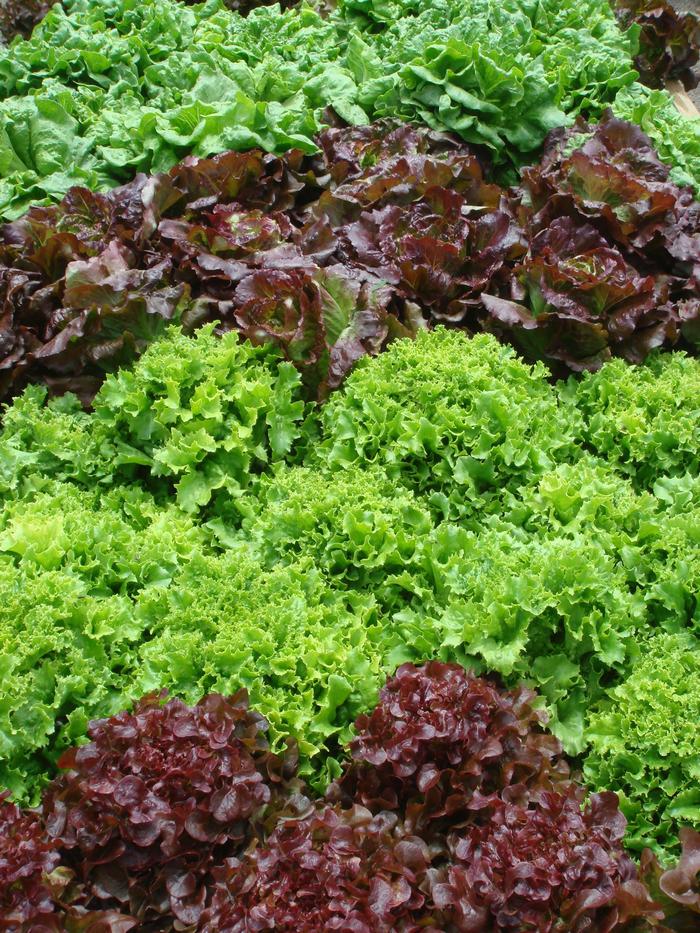Using Sensors, Electronic Regulating Equipment, and Automatic Controls For Aquaponic Systems:
We often get proposals for developing sensors and associated “control systems” for aquaponics in our email and through our FaceBook accounts. I have some comments based on 8 years of experience producing food with large commercial aquaponics systems:
You don’t need any of the automatic sensors or controls these people propose for ORGANIC aquaponic systems; they are unnecessary complication and expense for a series of stable chemical and biological processes that are dynamic, self-regulating, and self-controlling as long as you keep feeding the fish, and pumping and aerating the system water. They are so stable, in fact, that we test our aquaponic system water at least once a month, whether we think we need to or not.
(Below) This is the kind of explosive, profitable growth you get in an Organic aquaponic system. Because the system is largely a self-regulating and adjusting aquatic ecosystem, it needs a minimum of human intervention to keep on producing like this. Feed your fish, keep your electricity on, keep your plants cool in the summer and warm in the winter, and it’s incredibly stable.
This inherent dynamic stability does not apply to what we refer to as “experimental” systems, where the owners keep changing things: “trying out this” this week, and “adding that” the next week. In such a situation, the system has no chance to become stable; because you are continually putting salt or maple syrup in the gas tank, so to speak. Just as a car has a hard time running when the owner is doing that kind of thing, so does an aquaponic system.
However, a good organic commercial system using a profitable and proven technology is almost completely stable, in water temperature, nutrient levels, ammonia level, and DO level. Temperature changes so slowly you don’t need temperature sensors, and the most expensive temperature control you might ever need is a thermostatically-controlled valve to turn off your water heater or divert your water from your solar hot water heater (if you have one).
Ditto for your ammonia level; it changes over a period of weeks or even months, and if it is getting too high, simply sell half your fish, feed your fish less, or both.
DO in your system changes slooowly in response to your fish getting bigger; and slowly in response to your water temperature either decreasing or increasing. DO changes quickly only when a blower or air pump fails; then you see a drastic drop in DO within minutes/hours, depending on how your system is set up. A sensor doesn’t do you any good here unless there’s someone to respond to it within about a half hour.
Nitrates and nitrites aren’t measurable with sensor-based meters anyway, are a bit more complex, and aren’t explainable in a single sentence; you can refer to the explanation on them included in this post.
You don’t need automatic controls, you need to understand that to be successful with aquaponics, you have to be there, working your aquaponics system. It won’t do it by itself, and thinking an automatic control system will do it shows a basic misunderstanding of what is required for success: the “farmer’s shadow” on the plants and fish is what’s required.
There’s no “shadow” if you’re not there, and there’s no way of knowing what’s going to happen that could have been prevented if you were there: a plastic bag blows in on the wind and clogs an outflow pipe, and all your water gets pumped out onto the ground. Your automatic shutoff valve sticks in the open position and dumps $175 worth of water onto the ground over the weekend while you go to the lake; or worse, the shutoff valve sticks in the closed position and your fish and plants dry out and die because no one was there to manually fill up the water.
People have this innate need to “control” things, and here it is neither necessary nor economical. For more input on this, please also see “Cleaning Your System: Fish Tank And Troughs”, somewhere around page 81 in this manual. The easy way is to just grow some plants and fish in a self-balancing system (and check the water parameters once a month as we do! LOL!).
Hello Guys, I know I have asked you this before, but I can’t find the email with the information. Can you give me the name of the material that was used to cover the lettuce to prevent insect and bug attacks. I am growing some specialty mints and need this type of covering.
Hi Victor,
The material is commonly called bug netting or insect barrier netting and you can find it at any garden center or even on Amazon. Its very fine mesh keeps the bugs off but make sure to secure the edges because they will try and crawl under to get to your delicious mint.
Have a great weekend!
-Jessica